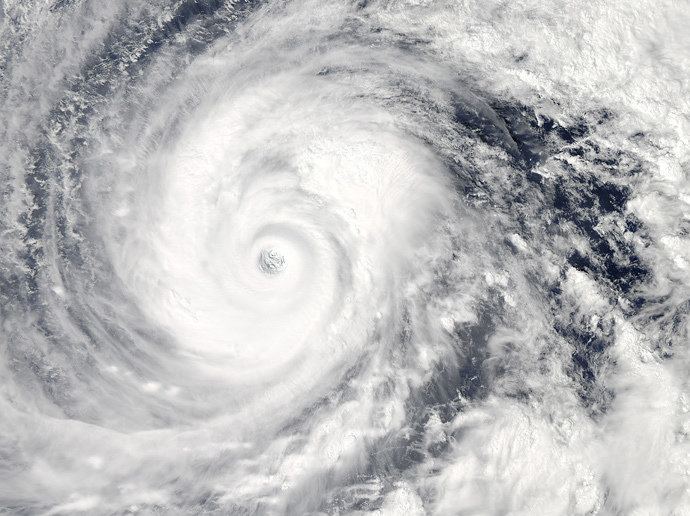Fukushima Update:
15.10.2014
Agency: Fukushima workers urgently trying “to prevent groundwater from leaking into ocean” — Levels of nuclear waste surge next to sea — #Strontium90 shatters previous record by over 5 Billion Bq/m3 — Now 25 million times EPA limit
Published: October 15th, 2014 at 1:00 am ET
By ENENews
Jiji Press, Oct. 14, 2014: Cesium Level Rises in TEPCO Plant Well — [TEPCO] on Tuesday reported a sharp rise in cesium levels in water collected from an observation well near the sea [on] Monday [with] a record 251,000 becquerels of radioactive cesium per liter, 3.7 times the cesium level… [last] Thursday… Monday’s reading was the highest level… from any of these wells…
 |
| The samples in question also contained 7.8 million becquerels of beta particle-emitting radioactive substances, such as strontium-90, per liter, also a 3.7-fold increase. |
ITAR-TASS (Russian News Agency), Oct. 14, 2014 (emphasis added): Highest radiation in ground water at Japan’s NPP after nuclear disaster… The highest radiation level was registered in subsoil water taken from a technical well at 1st and 2nd power units at Fukushima-1.., [TEPCO] said on Tuesday. The underground water sample was taken on October 13… Company’s experts said that a surge in radiation was linked with the impact of a typhoon raging in the locality, when heavy rain triggered spread of radiation-contaminated particles in underground water. Now nuclear plant’s specialists are pumping out ground water urgently to prevent it from leaking into the ocean.
Kyodo News, Oct 14, 2014 (Google translation): … record high values of cesium, the influence of the typhoon in Fukushima first nuclear power plant… from the water of the well in the seawall of the Fukushima Daiichi nuclear power plant Units 1 and 2 [cesium is 251,000] becquerels per liter… manganese 54 is… 700… cobalt 60 [is 3,600]… [TEPCO] found under the influence of typhoon No. 18 earlier this month, contaminated water that has accumulated in the piping has been spreading. Both record high values in groundwater…
Note that the most recent stontium-90 test results for well No. 1-6 published by Tepco on Oct. 1 show that levels of Sr-90 are virtually equal to Gross Beta. This means the Oct. 13 Sr-90 levels are near 7,800,000 Bq/L — 26,000,000 times the EPA limit for Sr-90 in water (0.3 Bq/L).
Note that the most recent stontium-90 test results for well No. 1-6 published by Tepco on Oct. 1 show that levels of Sr-90 are virtually equal to Gross Beta. This means the Oct. 13 Sr-90 levels are near 7,800,000 Bq/L — 26,000,000 times the EPA limit for Sr-90 in water (0.3 Bq/L).
See also: Officials: Typhoon caused significant increase in radioactive releases from Fukushima — Record levels of ‘highly toxic’ nuclear material found in ground outside reactor
13.10.2014
Typhoon #Vongfong heads right for Nuclear Plant as Massive #Radiation releases are recorded ahead of Storm...
BTW: M6.3 #quake hits Northern Japan ahead of Typhoon, not reported on #MassMarketMedia...
 |
| Typhoon Vongfong is seen in the Pacific Ocean as it approaches Japan's main islands on its northward journey, in this Moderate - Resolution Imaging Spectroradiometer (Reuters / NASA / Handout via Reuters) |
Japan Times (Jiji Press), Oct. 12, 2014 (emphasis added): The radioactive water woes at [Fukushima] got worse over the weekend after the tritium concentration in a groundwater sample surged more than tenfold… [Tepco] said Saturday that heavy rain caused by Typhoon Phanfone probably affected the groundwater… [The] 150,000 becquerels… is a record for the well… [Beta ray emitters at the well] also shattered records with a reading of 1.2 million becquerels… close to the plant’s port in the Pacific… [Another well had] a record 2.1 million becquerels of a beta ray-emitting substance, nearly double the level from a week earlier… The cesium activity in the sample was 70 percent higher at 68,000 becquerels… Readings hit record highs at three points after the heavy rain caused by the typhoon, but the utility said it does not know why.
Perhaps it has something to do with this report just after the typhoon hit last weekend: Officials: Typhoon triggers alarm at Fukushima plant -- Warning of leakage at Reactor No. 1 turbine building -- Leak then detected at Reactor No. 3 -- Camera captures images of water pouring in after "very heavy rain" -- Powerful storm still packing gusts of up to 180 km/hr off Fukushima coast
Japan Times (Jiji Press), Oct. 12, 2014: The water crisis could get worse… Typhoon Vongfong… was still packing winds of up to 180 kph… The Meteorological Agency said it [would be] gradually losing strength as it races north toward Tohoku [which includes Fukushima.]
In fact, officials at the Japan Meteorological Agency forecast Vongfong’s wind speed to lose just 5-6 mph from it’s current level by the time it reaches Fukushima prefecture. See: Typhoon winds up to 110 mph to hit Fukushima Daiichi, storm surge advisory issued -- Nearly all gov't forecasts show eye passing right over plant -- Nuclear Expert: Expect radioactive material washing into Pacific Ocean (MAPS)
Although not mentioned in the Japan Times’ report, a spike in Cobalt-60 was also seen after Typhoon Phanfone. The Co-60 concentration more than doubled the record high for any well since Tepco began publishing results. See: Officials: Typhoon caused significant increase in radioactive releases from Fukushima -- Record levels of 'highly toxic' nuclear material found in ground outside reactor -- Among the most poisonous substances at plant
Perhaps it has something to do with this report just after the typhoon hit last weekend: Officials: Typhoon triggers alarm at Fukushima plant -- Warning of leakage at Reactor No. 1 turbine building -- Leak then detected at Reactor No. 3 -- Camera captures images of water pouring in after "very heavy rain" -- Powerful storm still packing gusts of up to 180 km/hr off Fukushima coast
Japan Times (Jiji Press), Oct. 12, 2014: The water crisis could get worse… Typhoon Vongfong… was still packing winds of up to 180 kph… The Meteorological Agency said it [would be] gradually losing strength as it races north toward Tohoku [which includes Fukushima.]
In fact, officials at the Japan Meteorological Agency forecast Vongfong’s wind speed to lose just 5-6 mph from it’s current level by the time it reaches Fukushima prefecture. See: Typhoon winds up to 110 mph to hit Fukushima Daiichi, storm surge advisory issued -- Nearly all gov't forecasts show eye passing right over plant -- Nuclear Expert: Expect radioactive material washing into Pacific Ocean (MAPS)
Although not mentioned in the Japan Times’ report, a spike in Cobalt-60 was also seen after Typhoon Phanfone. The Co-60 concentration more than doubled the record high for any well since Tepco began publishing results. See: Officials: Typhoon caused significant increase in radioactive releases from Fukushima -- Record levels of 'highly toxic' nuclear material found in ground outside reactor -- Among the most poisonous substances at plant
Typhoon winds up to 110 mph to hit Fukushima Daiichi, storm surge advisory issued — Nearly all gov’t forecasts show eye passing right over plant — Nuclear Expert: Expect radioactive material washing into Pacific Ocean (MAPS)
Japan Meteorological Agency forecast for Typhoon Vongfong, Oct. 12, 2014 at 6:50a UTC:

Forecast tracks show the center of Typhoon Vongfong over Fukushima Daiichi on Tuesday morning Oct. 14 (Japan, U.S., Hong Kong, China, Taiwan, and ensemble), Oct. 12, 2014:
 |
Tropical Cyclone Information
Tropical cyclones do not necessarily move along the lines
connecting the centers of probability circles.
Unit: 1KT(knot) = 1.852 km/h = 0.5144 m/s
1NM(nautical mile) = 1.852 km
|
DW, Oct. 10, 2014: Is Fukushima capable of withstanding a super typhoon?
Nuclear expert Michael Maqua, Oct. 10, 2014: “Expect radioactive isotopes… transported into the groundwater or the sea… The main risk of the typhoon is… mainly [at] reactor 3… rain water will [likely] mix with the contaminated water in the basements of the reactor buildings and thus more radioactivity could be washed to the sea.”
Source Report:
http://enenews.com/winds-110-mph-expected-fukushima-all-govt-forecasts-show-typhoon-passing-nuclear-plant-maps
http://enenews.com/agency-fukushima-workers-urgently-trying-prevent-groundwater-leaking-ocean-levels-nuclear-waste-skyrocket-next-sea-strontium-90-shatters-previous-record-5-billion-bqm3
http://enenews.com/agency-fukushima-workers-urgently-trying-prevent-groundwater-leaking-ocean-levels-nuclear-waste-skyrocket-next-sea-strontium-90-shatters-previous-record-5-billion-bqm3
http://madtownpreppers.blogspot.com/2013/09/fukushima-daiichi-cautionary-preppers.html
http://rt.com/news/195076-japan-earthquake-typhoon-vongfong/
http://www.tepco.co.jp/nu/fukushima-np/f1/smp/2014/images/2tb-east_14101302-j.pdf
http://rt.com/news/195076-japan-earthquake-typhoon-vongfong/
http://www.tepco.co.jp/nu/fukushima-np/f1/smp/2014/images/2tb-east_14101302-j.pdf
 | |||||
Aerial View of Fukushima Daiichi Nuclear Power Station - NHK - See more at: http://madtownpreppers.blogspot.com/2013/09/fukushima-daiichi-cautionary-preppers.html
Madtown Preppers Alerts are for informational use only. These alerts purpose is to inform you of news events in order for you to adjust your family preparedness programs. We believe that knowledge is power and in order for you to make informed decisions, we try and bring you verified information, not to increase fear but to inform you. We do not endorse any of the sources we link to in any article.
|







No comments:
Post a Comment